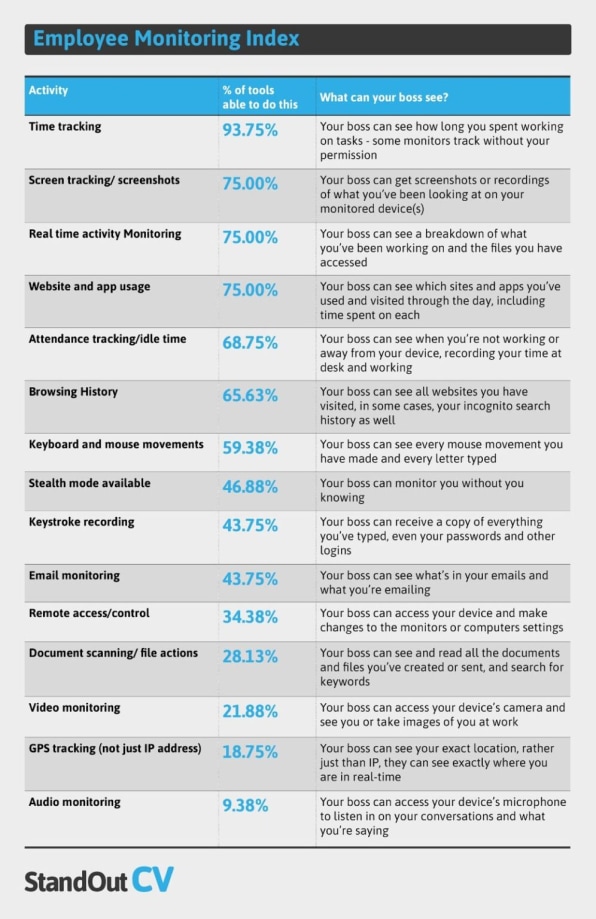If an employer installs time- or attendance-tracking software on your computer, that software can probably spy on you in lots of other ways as well.
A new study by the resume-help site StandOut CV compared the data collection features in 32 of the most popular employee monitoring tools. The group found that 75% of these tools can record employees’ screens and monitor which apps or websites they’re using, while 59% can monitor keyboard and mouse movements. Nearly half of those tools can run in a stealth mode, allowing employers to deploy the software on company-owned computers without workers’ knowledge.
The companies behind this software—including Hubstaff, Time Doctor, Teramind, and Interguard—say their businesses have boomed during the pandemic. StandOut CV’s study quantifies just how invasive this software has become across the board as vendors compete to offer the most comprehensive monitoring features.
Even more insidious forms of employee monitoring are less widespread but still available in several of the most popular software programs. StandOut CV found that 22% of those programs can access a device’s camera to take pictures of their workers, 19% support GPS tracking, and 9% can listen in on employees through their computers’ microphones.

Whether those tactics do more good than harm is up for debate. Research has shown that monitoring can work well if employers are transparent about why they’re doing it, and if employees feel it will improve their work. Conversely, invasive monitoring can lead to tension and burnout, and it can erode workers’ motivations to put in extra effort for a company. Monitoring software can also create privacy issues if employers slurp up personal data, and it can be a form of discrimination if managers use it to target specific workers.
It also might just be the wrong way to keep tabs on employees in a fully remote environment. Instead of just tracking the time and effort that goes in, companies might be better off looking at the work that comes out.
- Karlston
-

 1
1



Recommended Comments
There are no comments to display.
Join the conversation
You can post now and register later. If you have an account, sign in now to post with your account.
Note: Your post will require moderator approval before it will be visible.